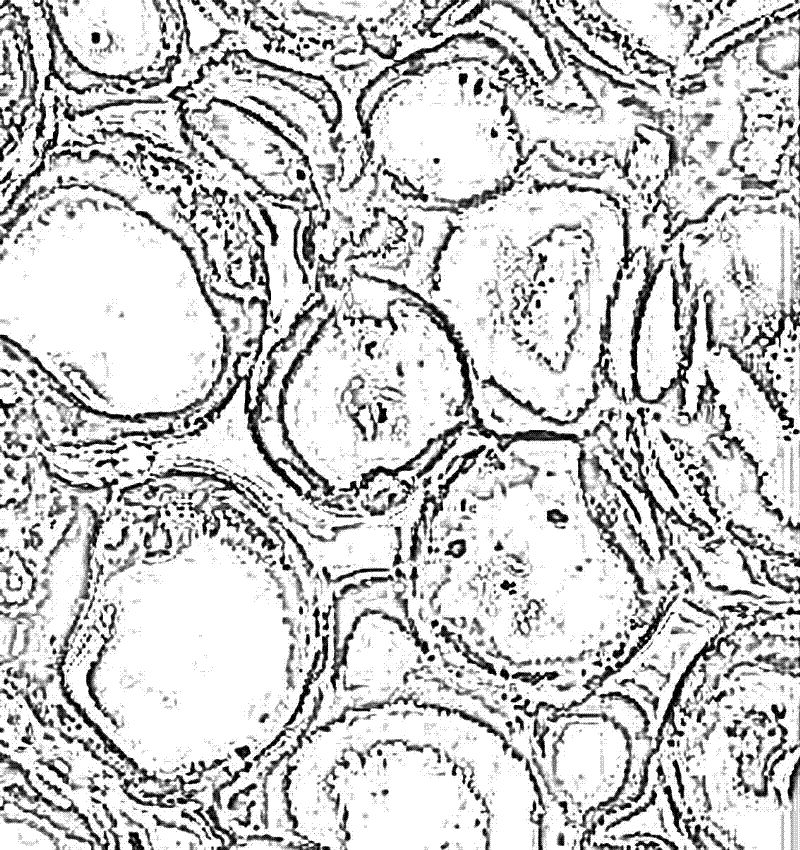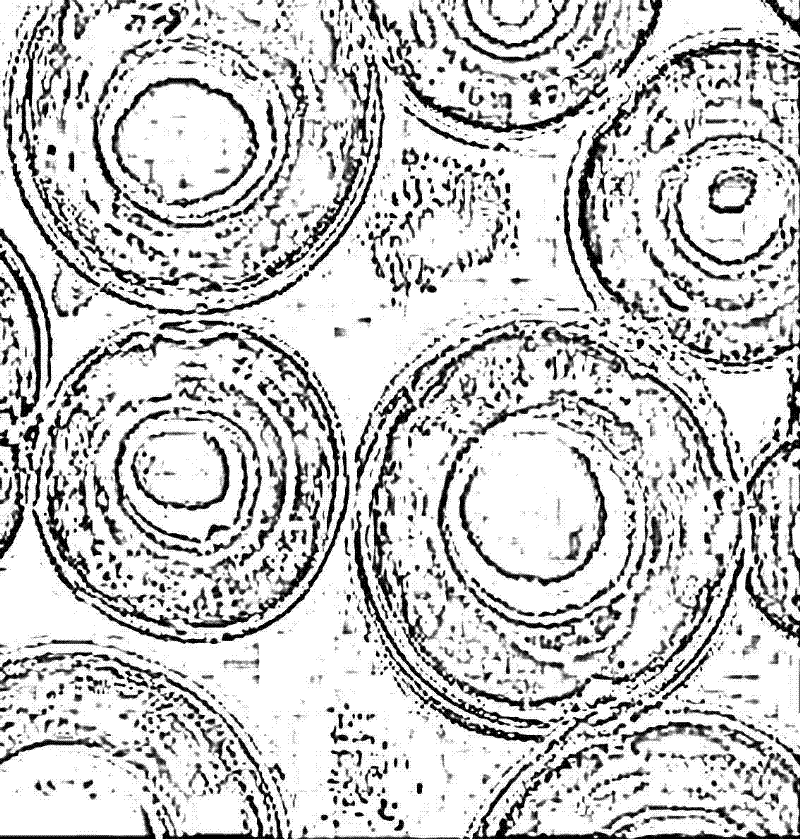Surface modification method of hollow glass beads
A hollow glass microbead, surface modification technology, applied in the treatment of dyed low-molecular-weight organic compounds, fibrous fillers, dyed organosilicon compounds, etc. Achieve the effect of reducing energy consumption, short modification time and low cost
- Summary
- Abstract
- Description
- Claims
- Application Information
AI Technical Summary
Problems solved by technology
Method used
Image
Examples
Embodiment 1
[0024] Example 1: Take 100g of hollow glass microspheres, wash their surface with absolute ethanol, wash away the surface impurities and dry at 120°C for 3 hours, preheat the mixer to 50°C, add the hollow glass microspheres into the mixer to continue Heat to 95°C, add 0.2g of γ-(2,3-glycidyloxypropoxy)propyltrimethoxysilane (KH560), adjust the speed of the mixer to 600r / min, keep the temperature at 95-105°C and continue stirring for 30min , to obtain modified hollow glass microspheres, then the modified hollow glass microspheres were added to 500g of epoxy resin, stirred, poured into the mold of the casting body, heated and solidified to obtain a sample, and the test results of the mechanical properties of the sample are shown in the table 1.
Embodiment 2
[0025] Example 2: Take 100g of hollow glass microspheres, wash its surface with absolute ethanol, wash away impurities and then dry it at 120°C, preheat the mixer to 60°C, add the hollow glass microspheres into the mixer and continue heating to 135 ℃, add 1.5g titanate coupling agent, adjust the speed to 1200r / min, keep the temperature at 125-135℃ and continue to stir and mix for 10min to obtain modified hollow glass microspheres, and then the modified hollow glass microspheres Add it into 500g of epoxy resin, stir for half an hour, pour it into the mold of the cast body, heat and solidify to obtain a sample, and see Table 1 for the test results of the mechanical properties of the sample.
Embodiment 3
[0026] Example 3: Take 100g of hollow glass microspheres, wash their surface with absolute ethanol, wash away impurities and then dry at 120°C, preheat the mixer to 70°C, add the hollow glass microspheres into the mixer and continue heating to 115°C, add 1.5g of alkyl anionic surfactant, adjust the speed to 900r / min, keep the temperature at 110-120°C and continue stirring and mixing for 20min to obtain modified hollow glass microspheres, and then the modified hollow glass microspheres The beads were added to 500g of epoxy resin, stirred for half an hour, poured into the mold of the cast body, heated and solidified to obtain a sample, and the test results of the mechanical properties of the sample are shown in Table 1.
PUM
| Property | Measurement | Unit |
|---|---|---|
| density | aaaaa | aaaaa |
| particle diameter | aaaaa | aaaaa |
Abstract
Description
Claims
Application Information
 Login to View More
Login to View More - R&D
- Intellectual Property
- Life Sciences
- Materials
- Tech Scout
- Unparalleled Data Quality
- Higher Quality Content
- 60% Fewer Hallucinations
Browse by: Latest US Patents, China's latest patents, Technical Efficacy Thesaurus, Application Domain, Technology Topic, Popular Technical Reports.
© 2025 PatSnap. All rights reserved.Legal|Privacy policy|Modern Slavery Act Transparency Statement|Sitemap|About US| Contact US: help@patsnap.com



